Abstract
Research has shown that noncontingent reinforcement (NCR) can be an effective behavior-reduction procedure when based on a functional analysis. The effects of NCR may be a result of elimination of the contingency between aberrant behavior and reinforcing consequences (extinction) or frequent and free access to reinforcers that may reduce the participant's motivation to engage in aberrant behaviors or mands. If motivation is momentarily reduced, behavior such as mands may not be sensitive to positive reinforcement. In this study, for 3 children with aberrant behavior maintained by tangible positive reinforcement, differential-reinforcement-of-alternative-behavior schedules were superimposed on NCR schedules to determine if mands could be strengthened. Results for the participants indicated that NCR did not preclude reinforcement of mands.
Full text
PDF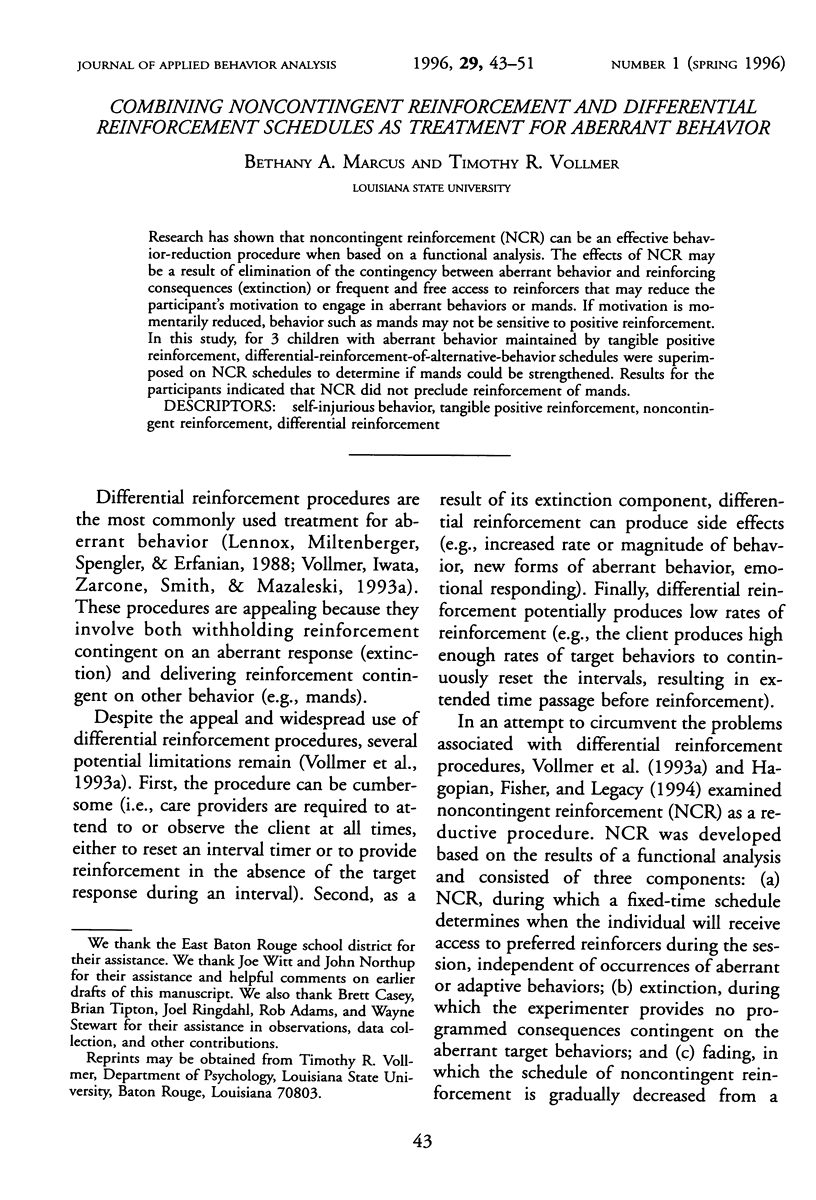

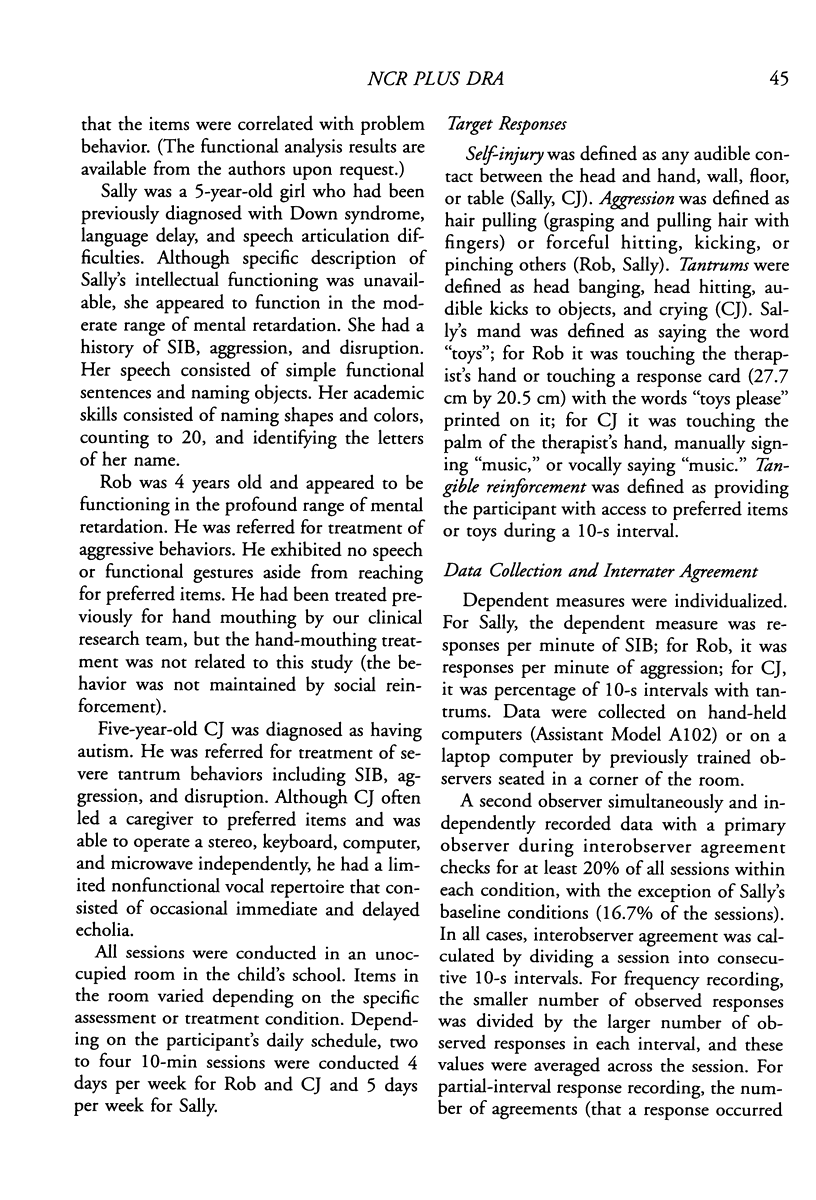


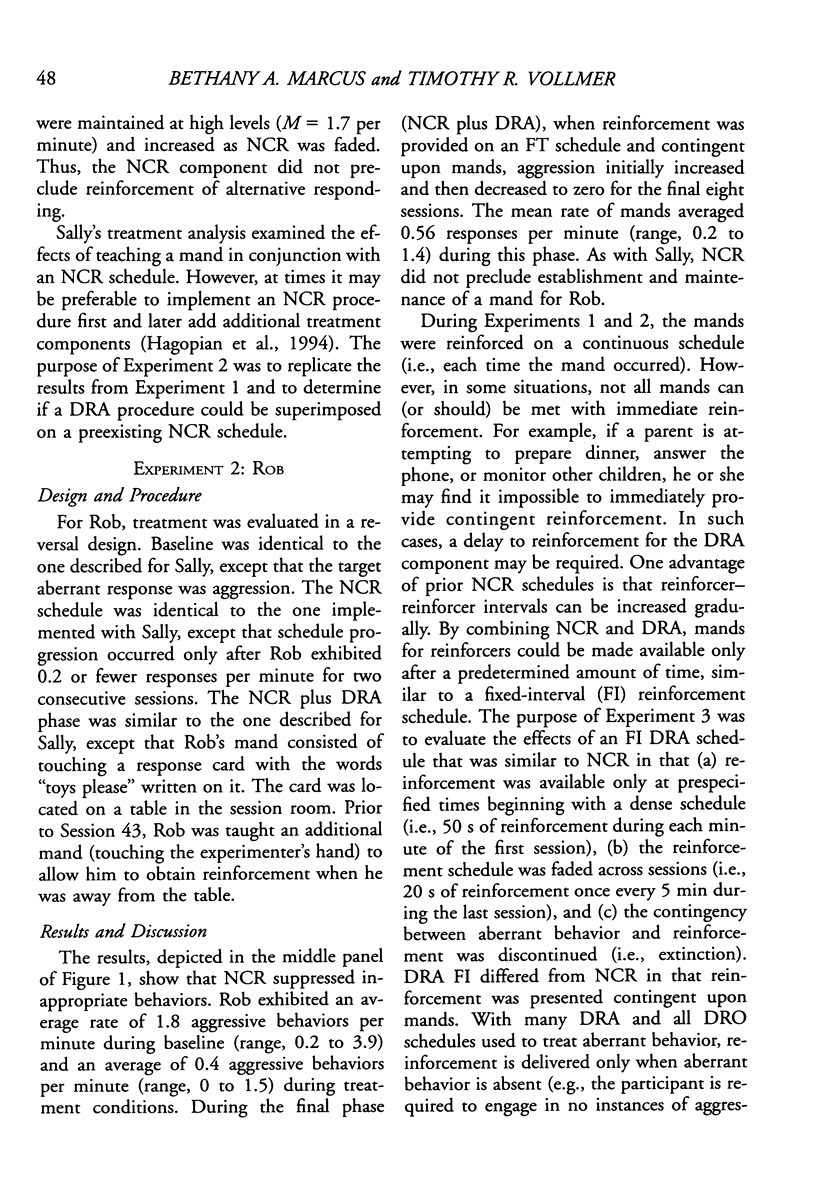
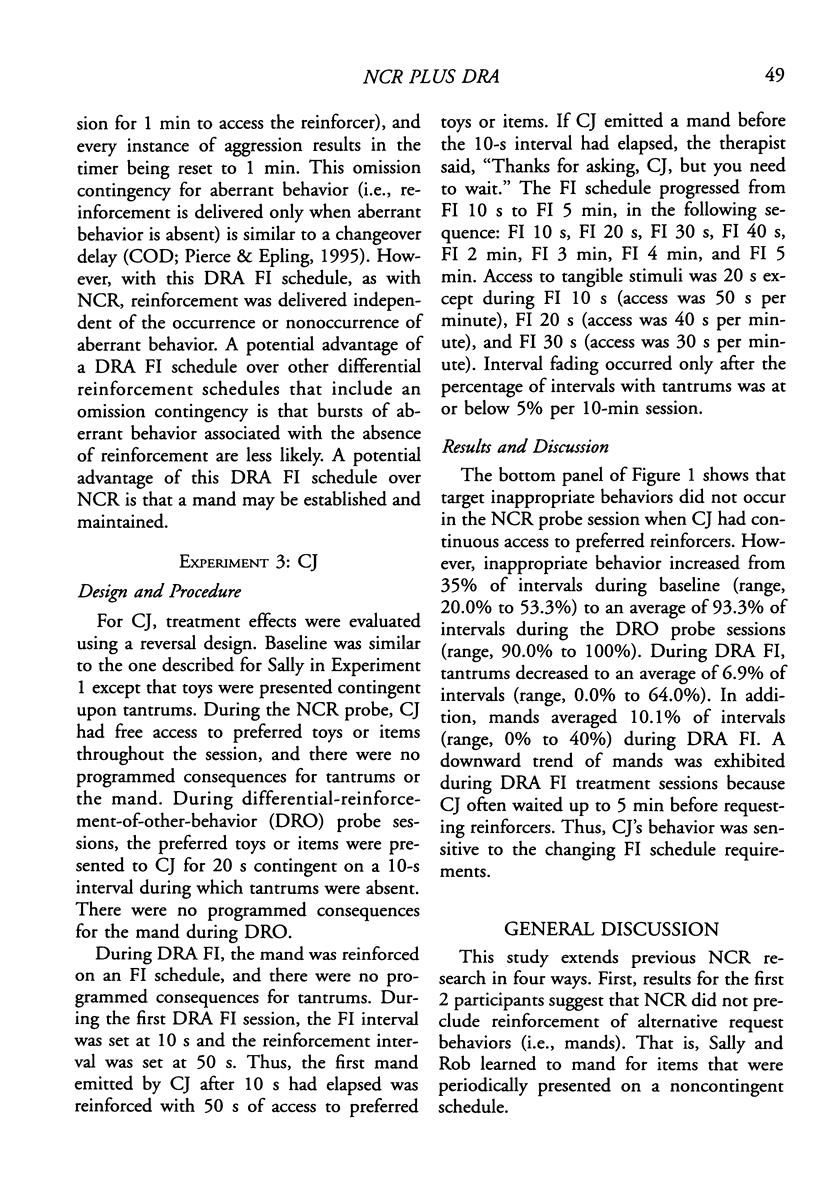
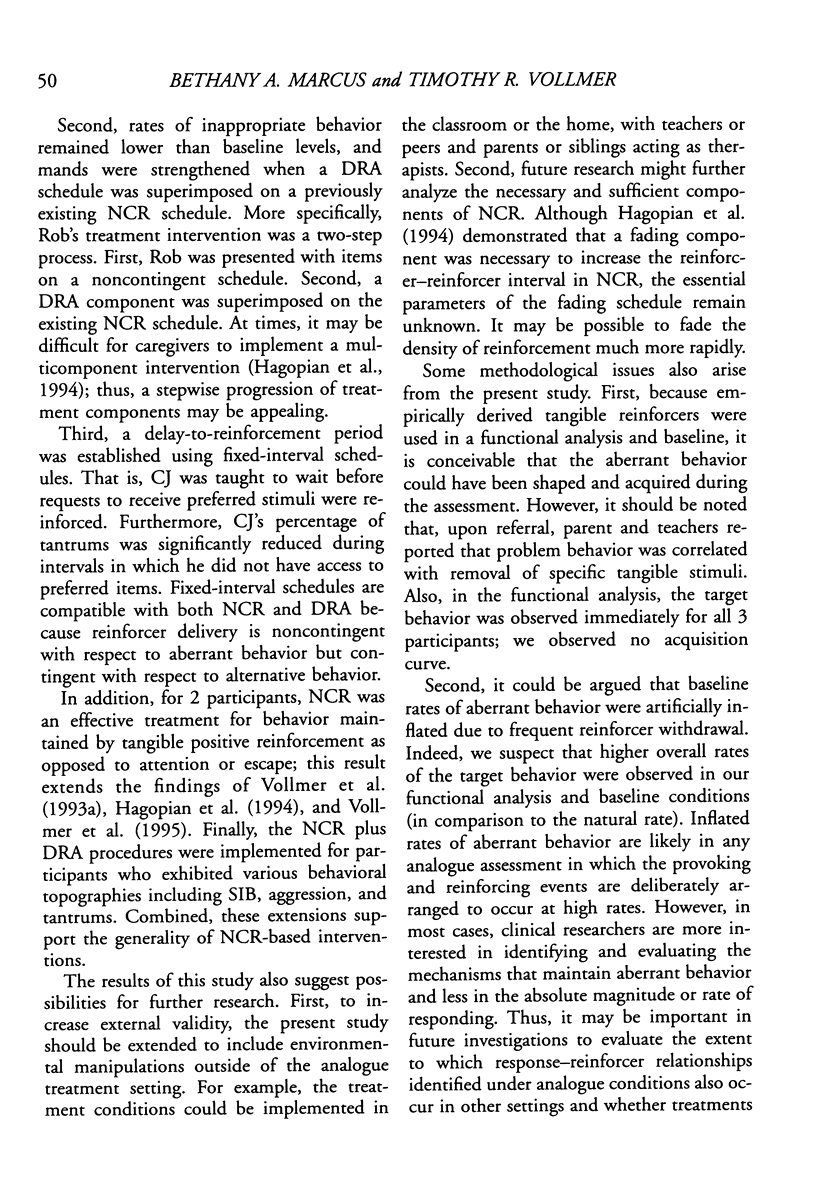
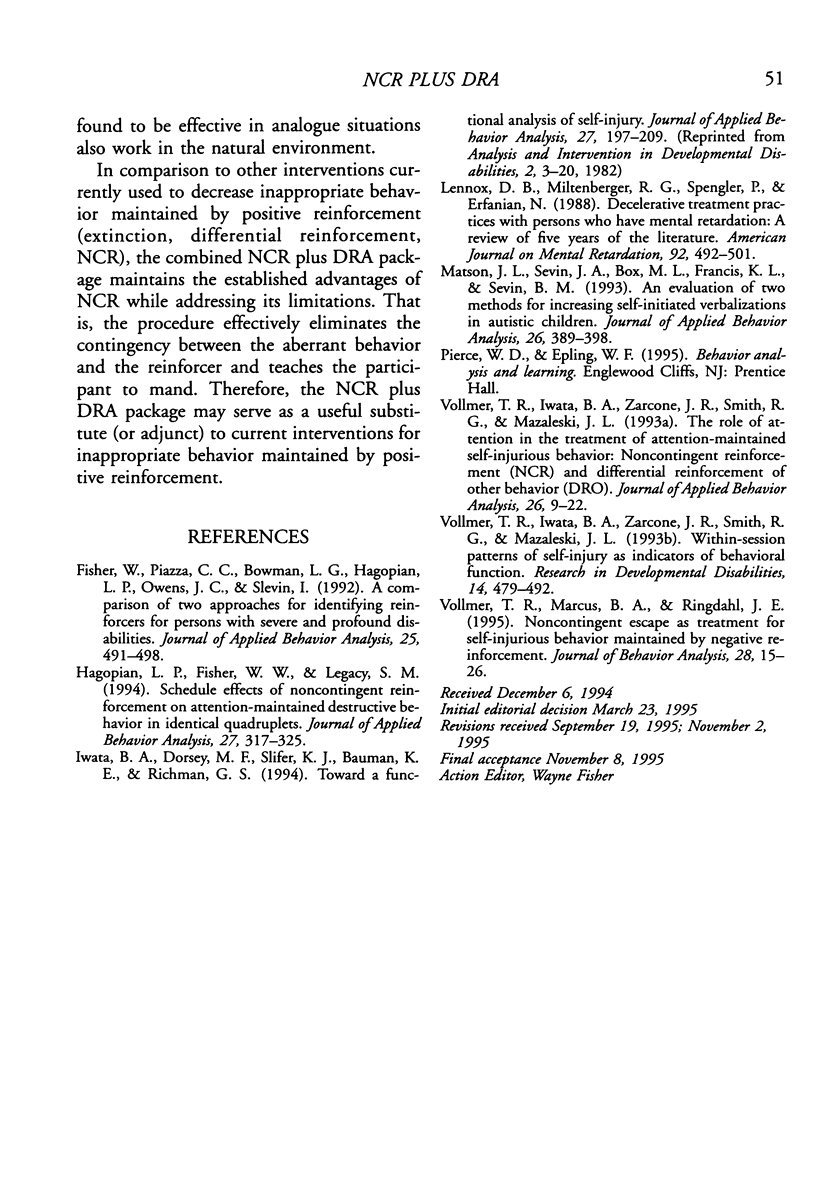
Selected References
These references are in PubMed. This may not be the complete list of references from this article.
- Fisher W., Piazza C. C., Bowman L. G., Hagopian L. P., Owens J. C., Slevin I. A comparison of two approaches for identifying reinforcers for persons with severe and profound disabilities. J Appl Behav Anal. 1992 Summer;25(2):491–498. doi: 10.1901/jaba.1992.25-491. [DOI] [PMC free article] [PubMed] [Google Scholar]
- Hagopian L. P., Fisher W. W., Legacy S. M. Schedule effects of noncontingent reinforcement on attention-maintained destructive behavior in identical quadruplets. J Appl Behav Anal. 1994 Summer;27(2):317–325. doi: 10.1901/jaba.1994.27-317. [DOI] [PMC free article] [PubMed] [Google Scholar]
- Iwata B. A., Dorsey M. F., Slifer K. J., Bauman K. E., Richman G. S. Toward a functional analysis of self-injury. J Appl Behav Anal. 1994 Summer;27(2):197–209. doi: 10.1901/jaba.1994.27-197. [DOI] [PMC free article] [PubMed] [Google Scholar]
- Lennox D. B., Miltenberger R. G., Spengler P., Erfanian N. Decelerative treatment practices with persons who have mental retardation: a review of five years of the literature. Am J Ment Retard. 1988 May;92(6):492–501. [PubMed] [Google Scholar]
- Matson J. L., Sevin J. A., Box M. L., Francis K. L., Sevin B. M. An evaluation of two methods for increasing self-initiated verbalizations in autistic children. J Appl Behav Anal. 1993 Fall;26(3):389–398. doi: 10.1901/jaba.1993.26-389. [DOI] [PMC free article] [PubMed] [Google Scholar]
- Vollmer T. R., Iwata B. A., Zarcone J. R., Smith R. G., Mazaleski J. L. Within-session patterns of self-injury as indicators of behavioral function. Res Dev Disabil. 1993 Nov-Dec;14(6):479–492. doi: 10.1016/0891-4222(93)90039-m. [DOI] [PubMed] [Google Scholar]
- Vollmer T. R., Marcus B. A., Ringdahl J. E. Noncontingent escape as treatment for self-injurious behavior maintained by negative reinforcement. J Appl Behav Anal. 1995 Spring;28(1):15–26. doi: 10.1901/jaba.1995.28-15. [DOI] [PMC free article] [PubMed] [Google Scholar]


